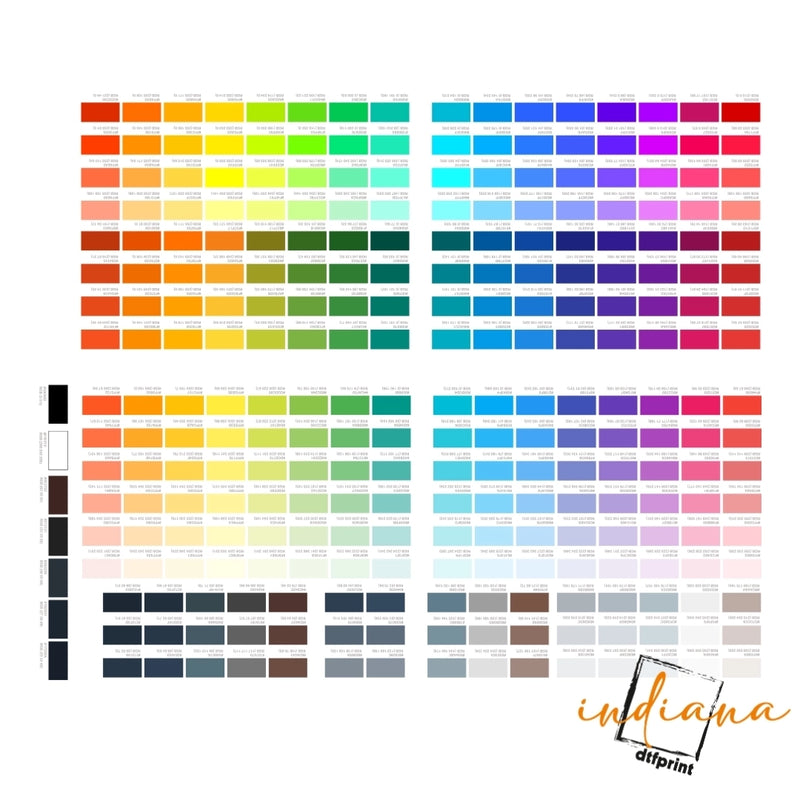Today's fashion moves with breakneck pace. Consumer expectations are stronger than ever, and trends shift quickly. This puts brands to the test: how can you stay ahead of the competition. While controlling expenses, cutting waste, and preventing supply chain interruptions?
This is where digital printing for on demand clothing manufacture is really helping. Brands may now print designs more efficiently, in smaller quantities, and closer to consumers rather than depending solely on traditional bulk manufacturing. Let’s explore how digital printing is reshaping the fashion supply chain.
The Old Supply Chain Problem
In the past, producing textiles frequently involved large orders, lengthy lead times, and international shipping. This created big risks. A single delay could slow down the whole chain.
Digital textile printing challenges first appeared when new machines and methods were introduced. At the start, costs seemed high, and some worried about print quality. However, digital techniques became more dependable, quicker, and sharper as technology advanced.
Nowadays, scaling digital production to meet demand without sacrificing flexibility is the true problem, not quality.
Why On-Demand Apparel Production Works
The rise of on-demand production textile solutions means brands don’t need to gamble with huge inventory anymore. Instead, they can print only what is needed when it is needed.
Fashion waste and unsold inventory are reduced for brands as a result. No more mounds of unsold clothes at the end of the season. Brands can respond quickly to consumer demand thanks to digital printing.
Building a Resilient Supply Chain
A resilient garment supply chain can bounce back from disruptions. Whether it’s shipping delays, raw material shortages, or sudden changes in demand. Digital printing provides agility.
The digital printing supply chain shortens production steps. Instead of sending designs to distant factories, brands can use nearshoring digital printing to bring production closer to their home markets. This reduces delivery times and lowers shipping risks.
Fast Turnaround Without Sacrificing Quality
Customers want fresh styles quickly. That’s where fast turnaround fashion printing becomes a game-changer. Digital printing allows designers to move from concept to finished product in days instead of months.
This creates a smoother digital production workflow fashion process. Designers can test new ideas, release limited editions, and stay ahead of micro trends.
Sustainability Benefits of Digital Printing
Fashion waste is a massive issue worldwide. Large bulk orders often lead to excess stock that ends up in landfills. Digital printing helps by supporting low-waste garment printing.
With sustainable digital printing, water use is lower, fewer chemicals are needed, and only the required amount of fabric is printed. This aligns with consumer demand for more eco-friendly clothing.
The Power of Agility in Fashion
Agility is no longer optional; it’s a must. The digital printing agility fashion supply chain allows brands to adjust production instantly. When one style sells out, more can be printed quickly. If a design flops, production can stop without losses.
This agility is also linked to the ability to reduce inventory with digital print methods. Brands can keep their stock lean, cut storage costs, and still meet demand.
The Future of Fashion Production
Looking ahead, digital printing will continue to evolve. Better machines, faster speeds, and improved inks will make it even easier for brands to adopt these methods.
The ultimate goal is simple: create a resilient garment supply chain that is fast, flexible, and eco friendly. With on demand apparel production, brands are already one step closer to that future.
Conclusion
Digital printing is no longer just an alternative; it’s a solution. From handling digital textile printing challenges to supporting fast turnaround fashion printing and low waste garment printing, it gives brands the tools they need to stay competitive.
If you want to explore how digital printing can strengthen your brand’s supply chain, visit Indiana DTF Print and see how modern solutions can support your business.
FAQs
1. What is on-demand apparel production?
Producing clothing on demand entails simply producing items in response to orders. This lowers waste, saves money, and guarantees that clients receive new ideas promptly without going overboard.
2. How does digital printing support sustainability?
Digital printing reduces water, chemical, and fabric waste. With sustainable digital printing, brands can cut their environmental impact. While still offering high quality, colorful, and trendy clothing designs.
3. What are the key digital textile printing challenges?
Scaling output, controlling expenses, and preserving print quality are the primary obstacles. As technology advances, these obstacles are getting smaller. And making digital printing more accessible for brands.
4. How can brands reduce inventory with digital print?
By printing only what’s needed, brands avoid extra stock. This method helps minimize unsold inventory fashion, lowering storage costs and cutting down on waste.
5. Why is nearshoring digital printing useful?
Nearshoring means moving printing closer to customers. It cuts shipping delays, reduces costs, and strengthens a resilient garment supply chain, helping brands stay more flexible and reliable.











